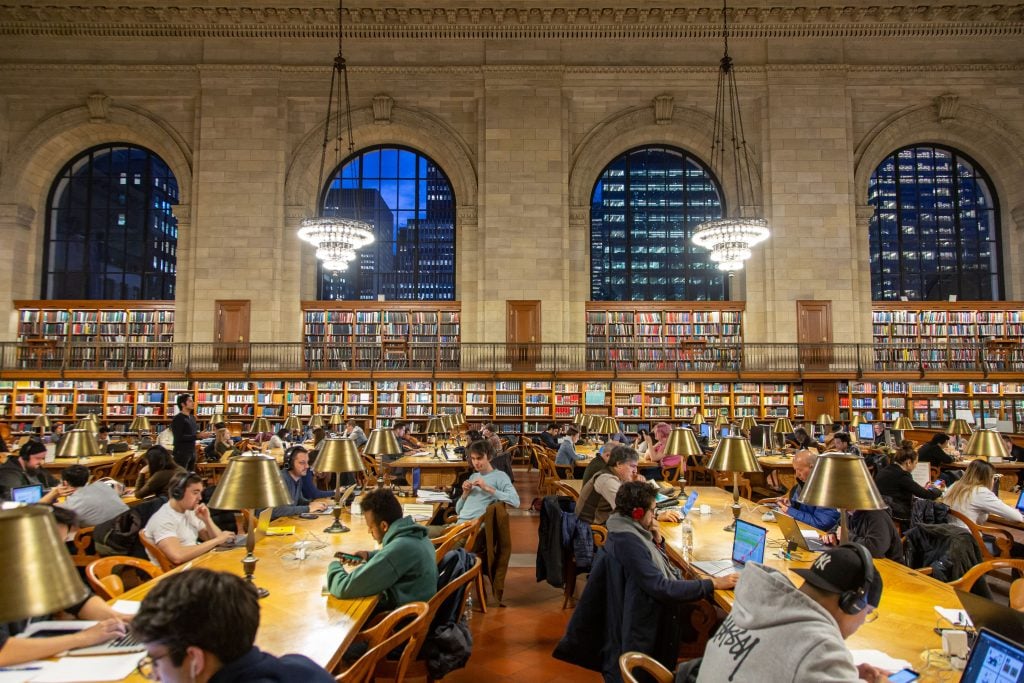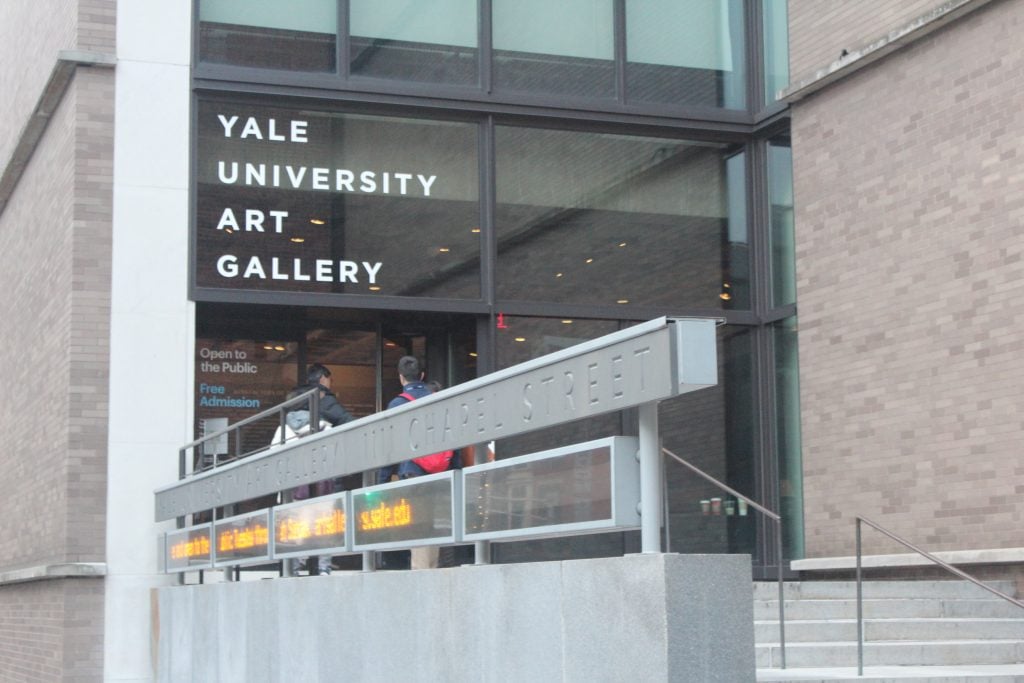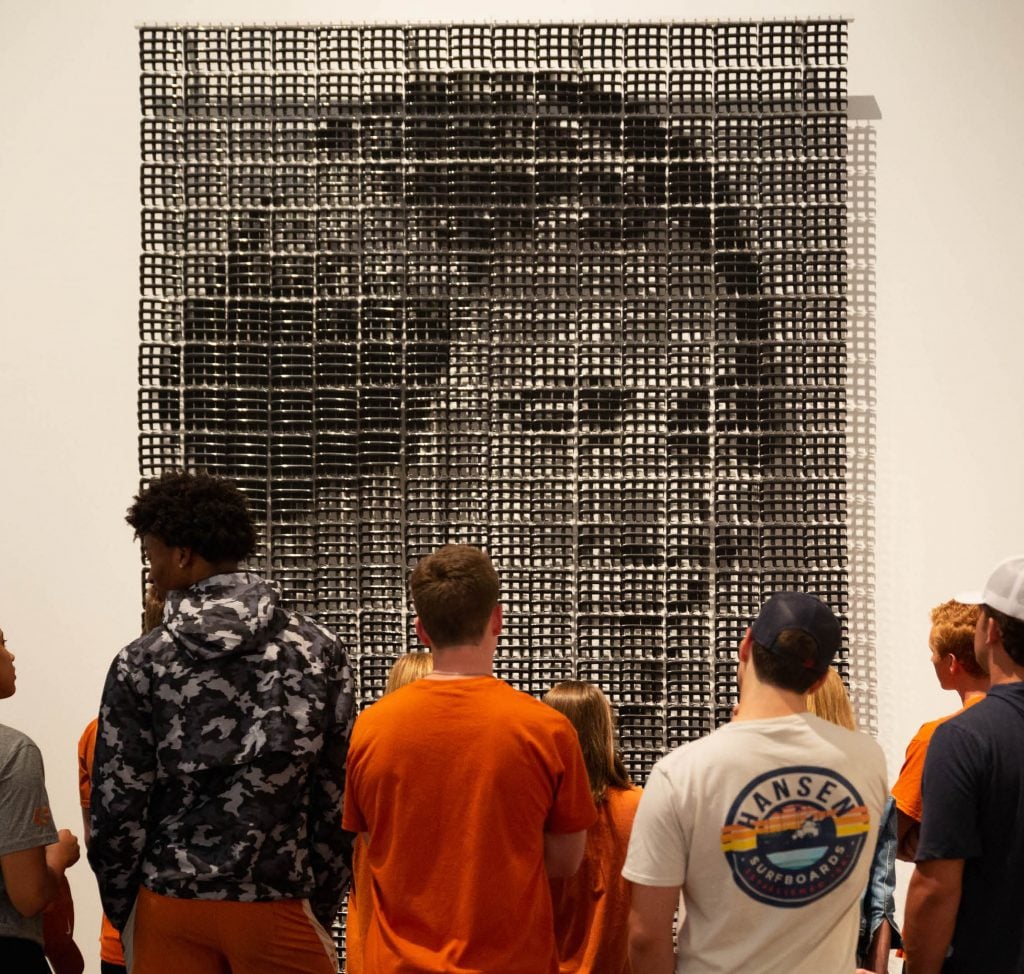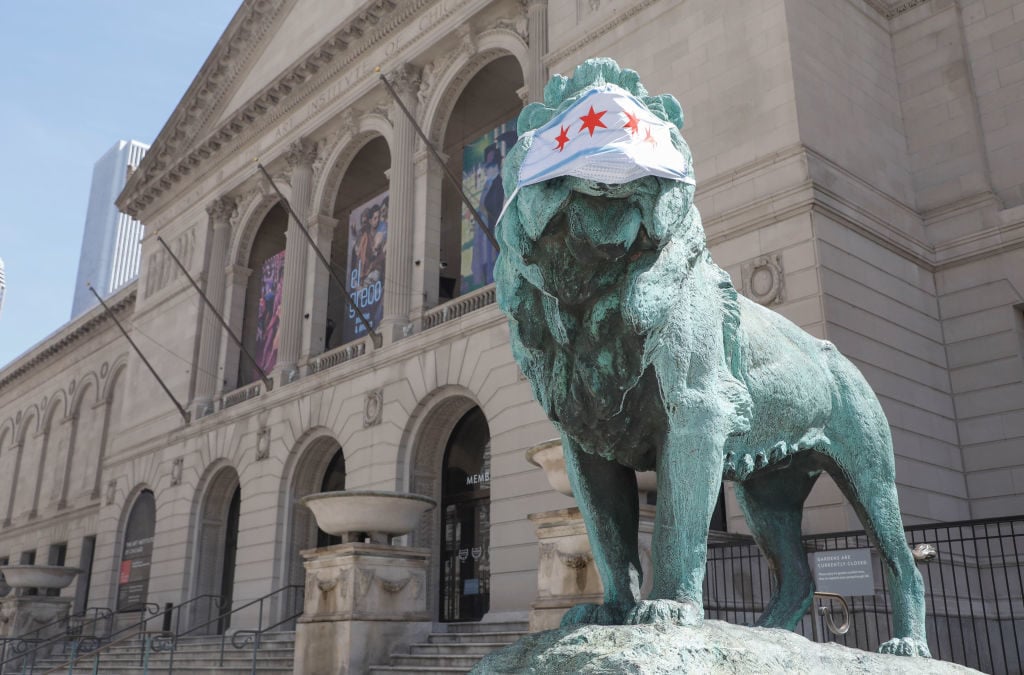What Can You Do With a Phd in Art
It was a tweet from New York governor Andrew Cuomo this past March that alerted Anna Ficek, a PhD candidate in art history at the City University of New York'south Graduate Center, to the fact that her classes would be moved entirely online for the rest of the semester—and mayhap longer.
The first shockwaves felt by many students in her department were the closures of libraries and archives, eliminating their concrete workspaces and admission to reading materials. And then came news that internships and chore offers had been rescinded, and what were already slim career prospects narrowed into microscopic ones.
Even under normal circumstances, the career path of an art historian is notoriously competitive and arduous, involving years of research and training simply to face off against countless other highly educated job seekers for increasingly low-wage, low-security instruction jobs.
Now, the pandemic has exacerbated the situation for PhD students and contempo graduates akin. Those who are still in school may face indefinite delays in completing their inquiry; those graduating in 2020 are looking at "a drastically reduced task market," according to John Clarke, an art history graduate adviser at the University of Texas at Austin.
Ficek isn't certain that she'll exist able to complete her studies at all. She is from Australia and her student visa expires in Jan 2022.
"I don't think I will finish by then and I'1000 worried about how I will utilize for a new visa, especially in one case I take run out of institutional funding," she says.

Students earlier the era of social distancing at the New York Public Library. Photo past Nicolas Economou/NurPhoto via Getty Images.
The Day the Libraries Airtight
The closure of libraries has forced many students to cull between abandoning their research birthday or extending the length of their studies while they expect out the pandemic. Some have even tried amassing their ain historic book collections to keep working.
"I've tried to abound my personal library every bit much equally I tin can, but with some key volumes priced at over $100, and some historical sources going for over $1,000, it is impossible on a graduate student salary," Ficek says.
Beyond access to research materials, the library too provided "air workout and stable cyberspace, none of which I have at abode," says Zsofia Valyi-Nagy, an art history educatee at the University of Chicago. "The academy administration's insistence that we should all be able to continue our work as per usual is extremely unrealistic."
Ane doctoral pupil at New York Academy'south Institute of Fine Arts (IFA), who wished to remain anonymous, said that the program is known for "object-based art history"—which poses a particular problem during the pandemic.
The institute "has no replacement for studying the object," the student says. "Those finishing upward their dissertations, looking to defend in the fall, are unable to consult sources, verify citations, etc., with the closure of library resources. All of this is greatly feet-producing, and hanging over all of united states of america is the specter of the complete collapse of the job market in all sectors of academia and the arts."
As a result, more than 55 IFA doctoral students addressed a letter in belatedly April to the schoolhouse's kinesthesia requesting that the administration increase fiscal back up by granting emergency funds and waiving fees; extend library privileges to post-graduates to support them every bit they enter the job market; and lengthen students' time-to-degree (the number of years candidates take to complete their PhDs).
A representative for the IFA declined to comment on the students' demands, but told Artnet News in an email: "The affect that COVID-19 has had on the academic earth is of bang-up significance, every bit it is in every aspect of our lives. We are even so working through what it will look similar in the autumn."

The facade of Yale's Art Gallery, courtesy of Flickr.
The Terminate of Research Trips
International travel is a key component of many art history students' research, and many programs have rigorous foreign-language requirements.
"I was supposed to hold a nine-month Fulbright fellowship to conduct inquiry away for my dissertation," says Valyi-Nagy, who is writing about the 96-year-old artist Vera Molnar, who lives in Paris.
"Despite her groundbreaking piece of work in computer art, Molnar doesn't use electronic mail or video conversation, so the primary purpose of my trip was to spend fourth dimension with her in her studio, conducting interviews and working through her archive together. At the chance of sounding macabre, I can say that time is not exactly on our side."
Emily Markert, a graduate educatee in the curatorial exercise program at the California College of the Arts in San Francisco, says that she had a inquiry trip to Los Angeles canceled in April, "and the grant coin will not be available to me next semester. I had to take that there would be holes in my last term paper research."
And Soffia Gunnarsdottir, a doctoral candidate who is studying Greek fine art at Yale University, tells Artnet News that her plans to conduct on-site research at archaeological sites and museums across the Mediterranean are on hold "indefinitely."
"I need to rethink how I can complete my projection on time with limited access to my objects of study," she says. "At this point, I would say my progress will be delayed past a year, if not more."

University of Texas, Austin students discussing Sonya Clark'due south Madam C.J. Walker (2008). Photograph courtesy of Blanton Museum of Art.
Making a Bad Job Marketplace Worse
Historically, most students earning PhDs in art history accept planned to get university professors. Merely in recent years, many superlative museum curator and managing director jobs began requiring candidates to accept advanced art history degrees, besides.
Today, doctoral programs often emphasize one career path or the other. "There are some that poo poo the curatorial path considering information technology's seen every bit 'subpar,' but nosotros're eager to have students become into both careers and we encourage them to continue both doors open," says Christine Mehring, chair of the University of Chicago's fine art history department and an adjunct curator at the Smart Museum of Art.
Both career paths are highly competitive, though bookish jobs, in particular, accept long been declining in terms of wages, job security, and benefits.
"The number of tenure-track faculty jobs has decreased dramatically and have been replaced with adjuncts or lecturers who accept 1 or ii classes, but don't have the task security or intellectual freedom that tenure offers," says Claudia Brittenham, a professor of art history at the University of Chicago.
"A much more probable path now involves doing a postdoc for a couple years, and then maybe some other one, and so a visiting assistant professorship, or taking a job that doesn't work and trying badly to go out of it. So you take this extended flow of dubiousness, moving every yr," Brittenham says. "It's hard to plan a life under those circumstances. And every yr that it continues, information technology makes things worse for the side by side year."
The shutdown has forced universities and museums across the land to slash budgets, leading to job cuts and a excess of eligible task seekers.
Earlier this calendar month, CUNY laid off thousands of adjunct faculty and staff, spurring its labor union to sue the university for allegedly violating its obligations nether the CARES Act, the pandemic stimulus packet that awarded the university $251 meg in relief money.
Representatives for the marriage, PSC/CUNY, did not reply to requests for comment.

The CUNY Graduate Middle in New York. Courtesy Wiki Commons.
The University of Chicago, meanwhile, put a hiring freeze on new authoritative staff positions and said information technology would be "slowing" bookish hiring. There are currently three open positions in the art history department, and "we're non expecting to search" for candidates, Mehring says.
"The chore markets are drying up in both academia and museums," says Mehring, who estimates that five to seven students in her department had job offers rescinded. "That is a very devastating situation to be in—when information technology can accept six to eight years, y'all worked this entire time, you get a job offering, and so information technology gets taken away? I cannot even imagine what that feels like."
Fortunately, ii of the students have since had their offers reinstated: One who was doing a postdoc and lost a tenure-track position had it reinstated for the post-obit year; another had a museum position withdrawn and then re-offered.
Markert says she spent much of February applying for summer internships at museums and arts organizations in New York.
"By mid-March, most every establishment to which I had applied announced the cancellation or postponement of their internship programs," she says. "Not just is an internship a requirement for my programme, merely this was to serve as a key building-block for career development, providing hands-on experience and the opportunity to make valuable professional connections. The loss of this experience—and the potential stipend that would have come with it—has been a great source of feet."
To brand matters worse, all of these job seekers are now function of employment excess, which was a growing problem for the field even before the pandemic.
"They're compounding furnishings," says Brittenham. "Every year, there are more than students than jobs. That creates a backlog for the next year, then there's this 'credential creep,' where you have applications for a tenure-rail professorship with someone who has a three-year postdoc and a bunch of manufactures, compared to someone who's just finishing a PhD, so then the credentials simply dilate and amplify."

The lion statue with a mask in front of the Art Establish of Chicago. Photograph: Joel Lerner/Xinhua via Getty.
Artistic Coping Strategies
Some universities are finding creative ways to assist students during this period of unprecedented hardship.
For students who were no longer able to piece of work their on-campus jobs after lockdown, for instance, the University of Chicago created paid off-campus internships. For art history students, Mehring approached curators and conservators at the Field museum and the Fine art Found of Chicago and told them the schoolhouse had students who needed work, and that the academy would pay them.
Many institutions agreed, and Mehring was able to place students into new internships. "They're merely over the moon," she says.
The university is too expanding its humanities teaching fellowships, which Mehring describes as "semi-postdocs."
Graduates who take completed their PhDs can spend up to two years teaching at the academy, while they use for permanent positions and, perhaps, work on publishing their dissertation as a book. The university is adding about a dozen of these fellowships.
Other students are reevaluating the job market place and beginning to look outside the traditional fields of employment for art historians.
"We have a student who's now working in academic affairs," Brittenham says. "Students are besides moving into publishing and foundations."
But those aren't necessarily less competitive fields. "The challenge is getting out of a circuit where there'due south non a lot of compensation and a lot of competition."
Follow Artnet News on Facebook:
Want to stay ahead of the art world? Subscribe to our newsletter to go the breaking news, eye-opening interviews, and incisive disquisitional takes that bulldoze the conversation frontward.
griffinmosedince1954.blogspot.com
Source: https://news.artnet.com/art-world/pandemic-impact-on-art-historians-1896601
0 Response to "What Can You Do With a Phd in Art"
Post a Comment